Changing Image of Changing Fashion
Gerard Uferas, Francoise Huguier

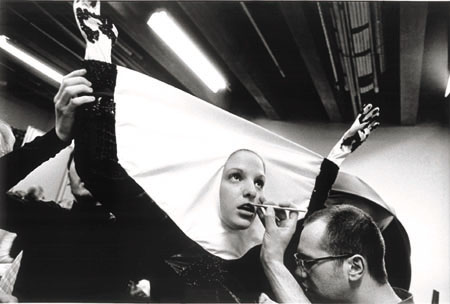
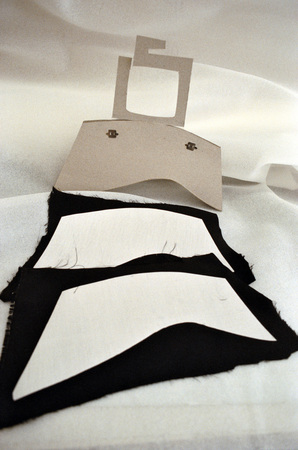
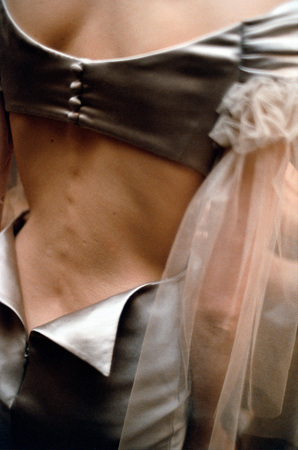
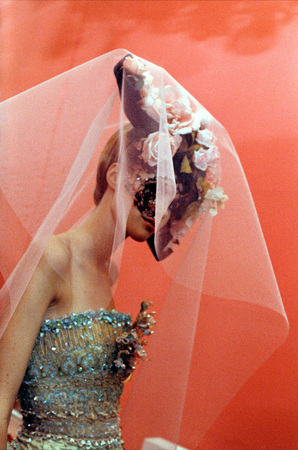
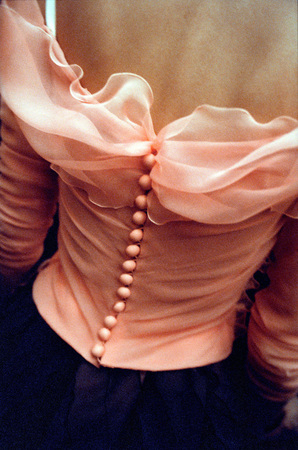
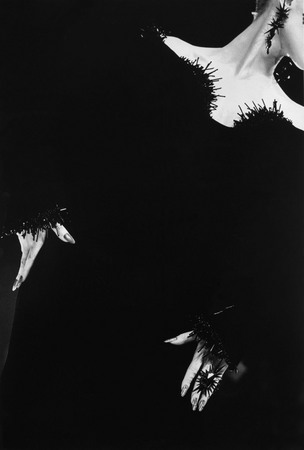

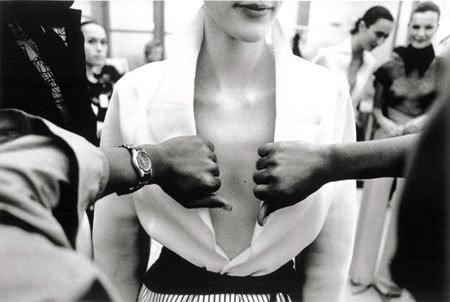
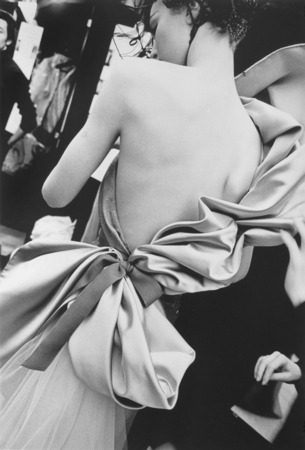
Gerard Uferas. Valentino. Haute Couture Collection, autumn-winter 1999/2000 July , 1999. ©GERARD UFERAS/RAPHO
Gerard Uferas. Arnhem Fashion Institution. Pret-a-porte Collection, autumn - winter 1999-2000. March , 1999. ©GERARD UFERAS/RAPHO
Francoise Huguier. The producing of a bag for Christian Lacroix at the Bertaux atelier. July , 1991. ©Francoise Huguier. Artist’s collection, Paris
Francoise Huguier. Haute Couture, Christian Lacroix, collection for Autumn-Winter 1996/1997. July 1996. ©Francoise Huguier. Artist’s collection, Paris
Francoise Huguier. Haute Couture, Christian Lacroix, collection for Spring-Summer 1997. January , 1997. ©Francoise Huguier. Artist’s collection, Paris
Francoise Huguier. Haute Couture, Christian Lacroix, collection for Spring-Summer 1990. January, 1990. ©Francoise Huguier. Artist’s collection, Paris
Gerard Uferas. Thierry Mugler. Haute Couture Collection, autumn-winter 1999/2000. July, 1999. ©GERARD UFERAS/RAPHO
Gerard Uferas. Jerome Dreyfuss. Pret-a-porte Collection, autumn – winter 2000/2001. February , 2000. ©GERARD UFERAS/RAPHO
Gerard Uferas. Abrakham Pelkham. Haute Couture Collection, spring-summer 1999. January, 1999. ©GERARD UFERAS/RAPHO
Gerard Uferas. Christian Lacroix Haute Couture Collection, spring-summer 1999. Paris. January, 1999. ©GERARD UFERAS/RAPHO
Moscow, 19.02.2010—4.04.2010
exhibition is over
Share with friends
For the press
Gerard Uferas is one of the most outstanding and celebrated contemporary French photographers. From 1984 onwards he has contributed to publications including Liberation, Telerama, Fortune, Business Week, Time magazine, Beaux arts magazine, Time Independent magazine, New York Times magazine, Jardin de mode, Das Magazin, Le Speccio della Stampa, Marie Claire (Italy), Le Monde, View Point, L’Officiel, Io Donna and Fashion.
Since 1993 he has been a member of the Rapho agency. As well as his career in photojournalism Uferas works as a portraitist and pursues personal projects that have culminated in book publications and exhibitions in different countries. His work features in various museum collections such as the Maison Europeenne de la Photographie in Paris, London’s National Gallery, the Lausanne Musee de l’Elysee and the Henkel Collection in Germany.
Gerard Uferas has received several international awards and prizes for his work:
1987 — Art Directors’ Prize, Paris
1990 — Prix Villa Medicis hors les murs, Paris
1991 — Arts Journalism Award, London
1997 — Art Stories 2nd Prize, World Press Photo, Amsterdam
1999 — SCAM Photography Portfolio Grand Prix, Paris
Gerard Uferas was universally acclaimed for his photographic series of the world’s major opera theatres a few years ago. His recently published book ‘The Fabric of Dreams’ presents Uferas in a new role, as fashion photographer. The preface was written by Christian Lacroix and Sarah Mower.
Кристиан Лакруа
Жерар Юфера попросил меня написать предисловие в качестве сопровождения этих фотографий. Я поискал слово «предисловие» в словаре, меня отправили к слову «преамбула», от греческого «идти впереди». В литургии — это та часть мессы, которая предшествует евхаристической молитве, «преамбула» излагает основополагающие принципы составления трактата. Совершенно очевидно, что эти два слова и работы Жерара Юфера соответствуют друг другу. Если предисловие к его работе фотографа пишу я — кутюрье — то несомненно его взгляд «идет впереди» моего и всех прочих взглядов: он представляет, схватывая с точностью до миллиметра почти завершенную стадию наших коллекций, переход от черно-белого к свету, проход через зеркало-экран, тот момент, когда модели только собираются стать отражениями этой «нейтральной полосы», полной биения, нервных пульсаций, этим местом временного пребывания, откуда они появятся на свет, и это будет как-никак жизнь.
Это — «пустой» момент, «схваченный», остановленный кадр, когда объектив трансформирует платье: оно было другим за секунду до этого и будет другим в следующее мгновение, это как «высший глаз» выявляющий внутренности, глаз геометра, надрезающего бюст, передвигающего ногу, удлиняющего пока неподвижную туфельку, стеклянную туфельку. Момент хрупкий, полный риска, грозящий опасностью. Надо будет перевалить вперед взгляд и отдачу, в это промежуточное пространство, поддающееся медитации. Молчаливое ожидание, безукоризненность, отсутствие, пустота или же, напротив, напряжение взгляда, куда-то погрузившегося, закрытый или задыхающийся от волнения глаз, ждущий помощи зеркала. Сомнение, фальшивая успокоительная отрешенность тех, кто остается невозмутимым, и тех, кто паникует. Изображать из себя другую, смотреть и не видеть, вот эти персонажи, стоящие в школьном ряду, безымянные героини со взглядом полным неведомых легенд, по точному сценарию, но ненаписанному, разве что в изгибе руки, в синеве теней, в текстуре ткани. История и география, литература, придуманные на двадцать минут. Зрительницы самих себя, оценивающие сцену, которая их поглотит, когда они сами окажутся загипнотизированными «краткой жизнью», готические или античные видения, вылепленные из ткани и чернил хрупкой консистенции, комедия романа, состоящего из одних фотографий: позы, еще позы, выражения лиц, мины, отдельные тайны, бесчувственные изображения, за которые хватаются анонимные руки, добросовестная, внимательная армада, лепящая маски и громоздящая украшения, почти примитивный ритуал, эзотерические сбруи. Похоже на прелестный шабаш насекомых, пришпиленных булавками по пути их бегства. Архитектура здания живая, пока не предстанет четкой, иератической, почти застывшей. Божественная композиция из плоти и костей, поддерживающая видимость, парусность лета посреди зимы. Потом остается пройтись, проплыть, пролететь по воде, легкий след в застывшем воздухе или решительный шаг вышедших на демонстрацию активисток, полупоэтическое полуспортивное кружение маленьких напудренных ритмических роботов, но бывает, и оступятся, ошибутся. Балет статуй, кукол, освободившихся, наконец, хризалид. Потом обратный путь. Служба закончена. Черно-белая, как домино, из света и тени.
Проявитель, в котором свет выявляет абстрактную, важнейшую деталь, говорящую о том, каков сезон; украденный снимок, выдающий все, ничего не выявляя, но рассказывающий больше чем все шоу целиком. Алхимия костяка и макияжа, кроя или позы, колдовство, при котором экстравагантные формулировки становятся истиной на шесть месяцев, выраженной в фотографических и акробатических хайку, фиксирующих последнее слово современности, вкус на сегодня, подобающий теперь вид, все то, что уже удаляется, от чего остался только знак, привет.
Francoise Huguier ranks among the world’s finest reportage photographers. In 1993 she received the prestigious World Press Photo award, and her documentary ‘Journee Ordinaire’ was shown at the 1990 Cannes Film Festival. She is also a renowned fashion photographer. Huguier’s book ‘Sublimes’, published in 1999, is a compilation of shots taken at fashion shows over the previous fifteen years. Her photographic series ‘Forgetting About Fashion’, dedicated to the House of Lacroix, was one of the most striking exhibits at the ‘Fashion and Style in Photography 2007’ festival.
Forgetting About Fashion
...’You can’t see the designs!’ True enough: in Francoise Huguier’s photographs the designs are not visible in the usual sense of the word.
Generally speaking it is hard to say if Huguier photographed a coat, dress or trousers in its entirety. The view is dispersed and a completely different picture emerges.
During fashion shows she is ubiquitous, always where you least expect her to be. But her movement bears no relation to agitation or disorder. In these photographs motion is silent and external. Francoise Huguier has mastered the art of suggesting dynamics in the static, like a commotion of particles arrested in their tracks.
Francoise has invented her own distinctive style, ‘Huguier’s touch’: her trademark diagonal frame, crooked and inverted. By aiming her camera from below she captures the geometry of fashion space.
Francoise Huguier truncates the bodies of models and outfits, they are nearly always beheaded. She devises for these bodies a crazy new life, life that has truly ‘lost its head’. These are bodies that have no thoughts, bodies liberated from the organism that walk beside their shoes, head over heels.
Fashion represents an important moment in the work of the photographer: the passage towards colour. Francoise Huguier is renowned above all for preferring black-and-white photography. But she has made a striking response to the challenge of colour she herself posed. Simply because she treats black and white as if they were colour, like many great photographers. Francoise Huguier has found the solution: photography in paints. It speaks of volume, thickness, material, chromatism and palette. Huguier’s photographs are extraordinary because she obliges the photograph to confront the ‘folly’ of art. Folly not only in the freedom with which she imitates reality, but also in her invention of reality. These photographs can be perceived as a gallery of pictures, pictures that can flirt with abstract painting in flourishes of colour or luminous flashes of daubed brilliance. In this respect Francoise Huguier sublimates rather than represents. Using her secret alchemy to pass from black-and-white to colour, Huguier transforms her images from something solid and supposedly resilient to a volatile, ethereal and infinitely dreamy state...
Gerard Lefort




